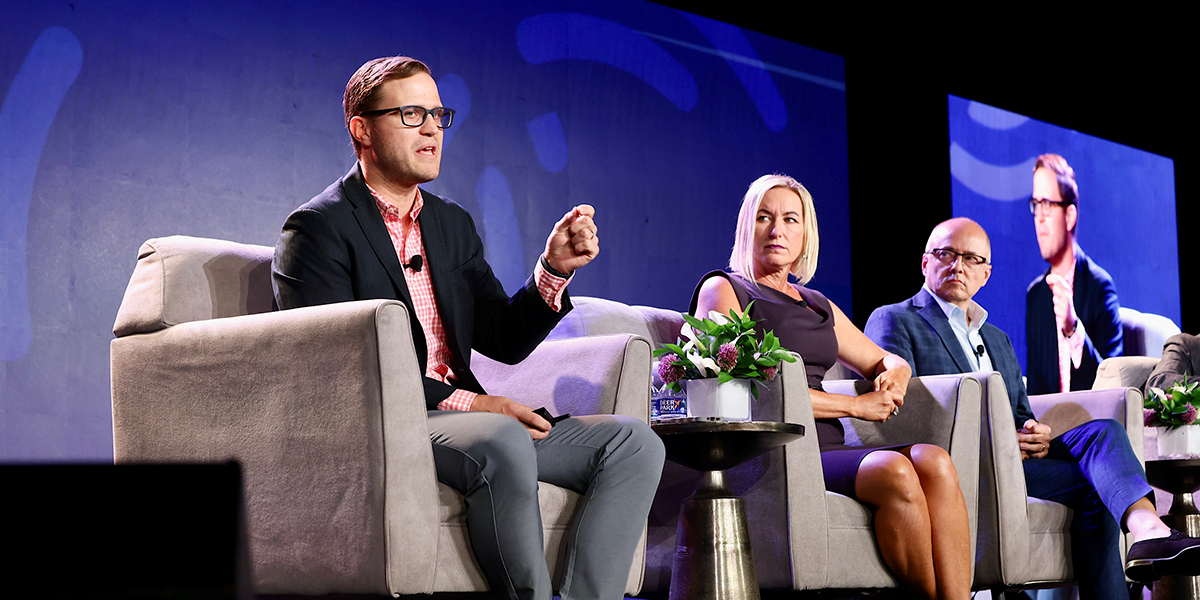How to understand consumer behavior to innovate senior living.
About 19 million people belong to the silent generation (born 1928-1945). They are the senior living customers of today. Compare that to the 70 million baby boomers (born 1946-1964) just starting to enter the pool of potential residents.
The groups are quite different, and not only in size. The silent generation (age 77-94) is often characterized as thrifty, respectful, unassuming, and loyal. Baby boomers (age 58-76) are portrayed as demanding, self-assured, independent, and competitive.
A well-attended educational session at the 2022 NIC Fall Conference addressed the challenge to understand the differences between the silent and baby boomer generations and how that impacts the senior living industry.
“Do we really understand our consumer?” asked Joe Daniels, panel moderator, and vice president at Direct Supply. “We have the opportunity to do things differently.”
Daniels was joined on the panel by several experts. They agreed that the industry must adopt a more customer-centric approach, especially to attract boomers. Marketing campaigns should micro target the local population, which can vary widely from place to place.
“It’s crucial to dive into the details,” said Arick Morton, CEO at NIC MAP Vision. “Who is really your customer?” He suggested using county-level psychographic, age and income data to understand the local customer base.

Operators need to curate an experience, tailored by market, showcasing a vibrant lifestyle to entice baby boomers to move sooner rather than later, according to panelist Traci Bild. The experience starts with the marketing process. “Be empathetic, listen, slow down,” advised Bild, chief visionary officer at Bild & Co. “Change the customer experience and how you make people feel.”
Think about your own buyer experiences, said panelist William Swearingen, senior vice president, Spectrum Retirement Communities. The buyer experience needs to meet their expectations. “It doesn’t take a budget. It’s about attitude, culture, and service,” he said.
Surveys can be useful to get feedback from customers and referral sources on the buyer experience. Ask customers, including the adult children, how the buying process makes them feel.
“Life sells on a tour,” said Morton. Potential residents and their families aren’t sold by beautiful empty spaces, he explained. They want to see residents actively engaged.
From Bingo to Madonna
Do prospective customers see residents playing bingo because it’s the best activity being provided? “Think about what that means,” said Swearingen. He cited a 2010 study that showed most people are well defined by the age of 40. Today’s resident who is age 85 was 40 years old in 1977. Activities should reflect events and interests of the late 1970s and early 1980s. These consumers don’t care about celebrity throwbacks to the 1940s. “We need to wake up,” said Swearingen. When he’s living in a retirement community at age 80, he expects the piped in music to feature Madonna’s greatest hits. “Take a chance,” he said.
A few tweaks to the dining experience can have a big impact for a relatively small investment. “Dining is the highlight of the day,” said Bild. “How can you improve the overall experience?” The use of outdoor patios as dining venues increased during the pandemic which has been a plus.
Technology is another area where senior living providers can improve their offerings. Major advances are being made in the areas of life safety and convenience. For example, artificial intelligence applications can help manage falls. Voice assistants, such as Amazon’s Alexa can carry out everyday demands. “We have a clear opportunity,” said Morton.
Current residents already have smart phones. “They’re more tech savvy than we think,” said Swearingen. The pandemic only accelerated the trend.

Amid rising resident acuity, more technology will be devoted to the management of chronic health conditions. Morton thinks that the silent generation has been less motivated to move into senior living because of their health status. But baby boomers are likely to delay move-ins until their health is compromised. “We need to understand how to build healthcare programming to meet their needs,” said Morton.
Providers should also be aware that a demographic shift is under way among adult children. A growing number of them belong to Gen X, a group worried about financial security.
The panelists discussed how to expand the consumer base. Private pay senior living mostly serves a well-off, white population, overlooking diverse groups. “We need an intentional effort to reach out to these populations,” said Swearingen. He added that marketing approaches tailored to different groups can result in two to three extra move-ins.
Websites should feature persons of color as residents. Spanish language marketing campaigns can result in occupancy growth. Providers shouldn’t assume that members of diverse groups can’t afford senior living. At the same time, certain groups that have a tradition of providing elders with care at home should be educated about what the industry offers.
Daniels concluded the session by asking the panelists the single biggest difference between boomers and the silent generation.
Swearingen said boomers are an opinionated population. “Be prepared to answer their questions,” he said. “Don’t be afraid.”
Bild noted that how the provider makes people feel has more impact than anything else. “Boomers like attention,” she said. “Master the human connection,” adding, “Time is on our side.”
Morton reminded the audience that the silent generation and boomers have very different life experiences. The world adapted to the boomers. The silent generation adapted to the world. “Understand who is your customer. Get the data.”